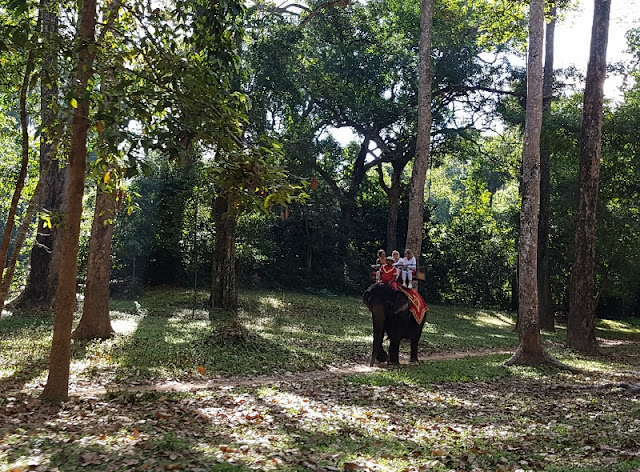20.01.2017 - After Angkor Wat, the next place is Bayon Temple. It was a 5 minutes drive from Angkor Wat Temple. I shared the temples that we would like to visit and the tuk-tuk driver arranged for us the temples to visit in sequence. Why did I choose Bayon Temple? Because of the detailed carvings of smiling faces on the stones. We spent one hour here.
The morning was getting hotter, and there were so many tourists. Most of them were from China, and a number of them were pushing to get in line, cutting queue and shouting very loudly causing some other Caucasian tourists to cringe at the loud voice (I saw this).
You can see more photos than words in this post.
The morning was getting hotter, and there were so many tourists. Most of them were from China, and a number of them were pushing to get in line, cutting queue and shouting very loudly causing some other Caucasian tourists to cringe at the loud voice (I saw this).
You can see more photos than words in this post.








Our tickets got checked at the entrance of the temple. There are 4 entrances. How do I know that? Because we walked in one circle to find our tuk-tuk driver as all the entrances and the carvings of all the smiling stone faces look almost the same. Plus, don't ask me for directions because I have no bearings at all.

The Bayon (Khmer: ប្រាសាទបាយ័ន, Prasat Bayon) is a well-known and richly decorated Khmer temple at Angkor in Cambodia. Built in the late 12th or early 13th century as the official state temple of the Mahayana Buddhist King Jayavarman VII, the Bayon stands at the centre of Jayavarman's capital, Angkor Thom. Following Jayavarman's death, it was modified and augmented by later Hindu and Theravada Buddhist kings in accordance with their own religious preferences.
The Bayon's most distinctive feature is the multitude of serene and smiling stone faces on the many towers which jut out from the upper terrace and cluster around its central peak. The temple is known also for two impressive sets of bas-reliefs, which present an unusual combination of mythological, historical, and mundane scenes. The current main conservatory body, the Japanese Government Team for the Safeguarding of Angkor (the JSA) has described the temple as "the most striking expression of the baroque style" of Khmer architecture, as contrasted with the classical style of Angkor Wat.
The similarity of the 216 gigantic faces on the temple's towers to other statues of the king has led many scholars to the conclusion that the faces are representations of Jayavarman VII himself. Others have said that the faces belong to the bodhisattva of compassion called Avalokitesvara or Lokesvara. The two hypotheses need not be regarded as mutually exclusive. Angkor scholar George Coedès has theorized that Jayavarman stood squarely in the tradition of the Khmer monarchs in thinking of himself as a "devaraja" (god-king), the salient difference being that while his predecessors were Hindus and regarded themselves as consubstantial with Shiva and his symbol the lingam, Jayavarman as a Buddhist identified himself with the Buddha and the bodhisattva. Source from Wikipedia.



As always, my sister and her friend are more interested in the birds than the temples. I have no idea what did they see.














Check out my temple run. There are so many of 'me'.




We exited the place, unaware which exit is it, and ended up walking in a circle back to our tuk-tuk. There were small temples outside Bayon.






So many tourist buses and tuk-tuk drivers. Now, we go to Ta Prohm - the place made famous by Angelina Jolie in Tomb Raider.
No comments:
Post a Comment